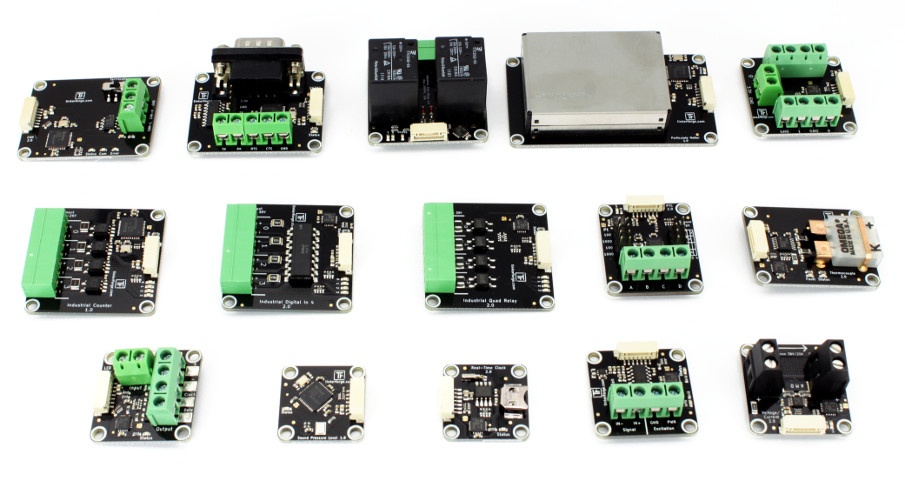We got a big delivery of new Bricklets! Since we got 15 different new Bricklets at once, we will split the blog entry in two parts.

Some of the new Bricklets got an upgrade with the addition of "2.0" to the name, they will replace the predecessor. Additionally we also have four completely new Bricklets, they will increase the possible applications of the building block system. We will introduce the new Bricklets in the next blog entry.
All of the new Bricklets have the new 7 pole connector. You can find more information about the new connector here. The folloging Bricklets now have a co-processor instead of the EEPROM and are in our shop as of now:
- Load Cell Bricklet 2.0
- PTC Bricklet 2.0
- Voltage/Current Bricklet 2.0
- Real-Time Clock Bricklet 2.0
- Thermocouple Bricklet 2.0
The following Bricklets got the 2.0-upgrade with additional useful improvements:
CAN Bricklet 2.0: The CAN Bricklet 2.0 now has a co-processor and thus more RAM. Because of that the Bricklet is more powerful and it can handle a high volume of data in longer bursts then the predecessor.
RS232 Bricklet 2.0: The RS232 Bricklet 2.0 also has more RAM compared to the predecessor. Because of the bigger buffer the handling of data can be significantly simplified. The Bricklet has the new streaming API, it works exactl the same way as it does with the RS485 Bricklet. The new streaming API was explained in detail here.
LED Strip Bricklet 2.0: Beside many small changes the new LED Strip Bricklet 2.0 has two significant improvments. It is now possible to control up to 2048 RGB or 1536 RGBW LEDs. The Bricklet can therefore control 6x as many LEDs as the old LED Strip Bricklet. Previously we had the constraint that with full usage of a LED Strip Bricklet it was not possible to use the other ports of the Brick. With the new LED Strip Bricklet 2.0 this is not the case anymore. You can control of the available LEDs and at the same time use the other free Bricklet ports without any negative effects.
Industrial Digital In 4 Bricklet 2.0, IO-4 Bricklet 2.0 und Industrial Quad Relay Bricklet 2.0: The new Bricklets with digital in-/outputs got an improved API. The API now uses bool-arrays instead of bit masks. This was sugested to us astoundingly frequent. Particularly users that use high-level languages that normally don't use bit masks (LabVIEW, Matlab, Visual Basic .NET) had often problems with them. On the protocol level the arrays are still transferred as bit masks, so there is not loss in performance.
Tomorrow we will introduce the Industrial Dual Relay Bricklet, Sound Pressure Level Bricklet, Particulate Matter Bricklet and Industrial Counter Bricklet in detail.

